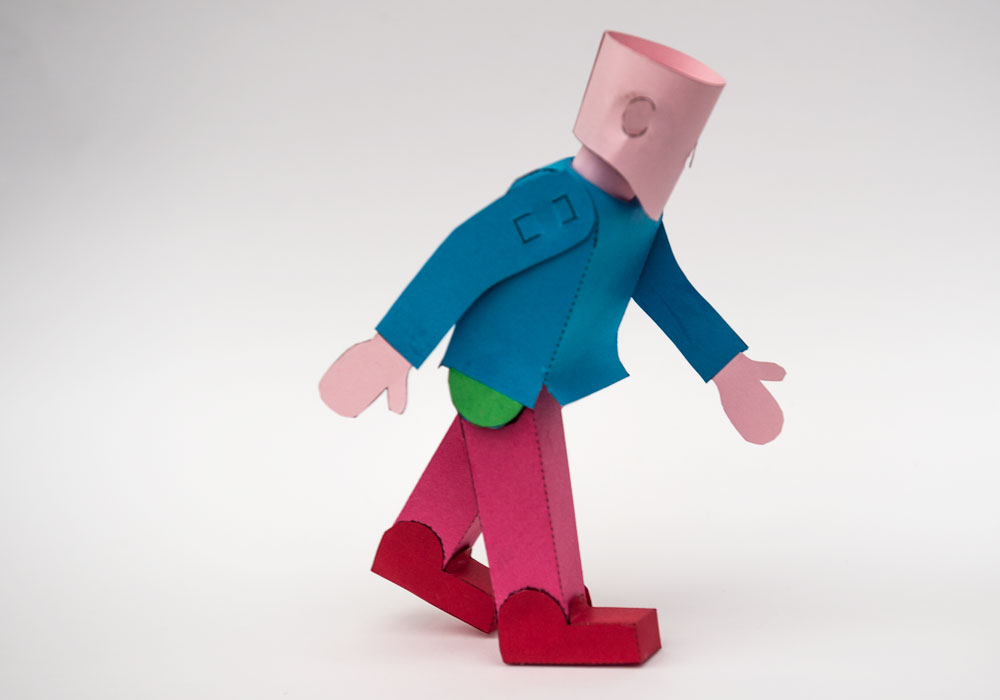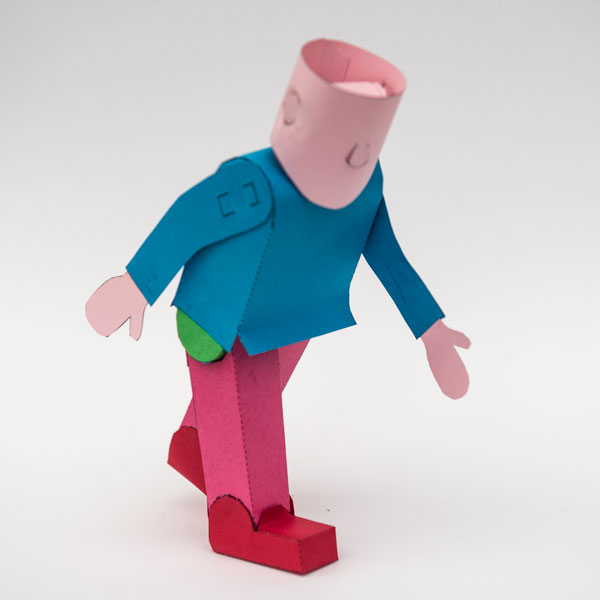Although the poseable character I’m working on is working out quite well I found that he was difficult to stand up in some poses. The problem is that the feet are fixed at ninety degrees. I thought I’d try out flexible feet and see how they went. Obviously, a model with flexible feet will be harder to make so part of the experiment will be a sort of cost-benefit analysis.
When I designed the curve at the top of the legs I used half of twelve sided polygon rather than an actual curve. The results is a neater more professional looking part. I decided to use the same at the bottom of the leg.
To start I selected the polygon tool in Illustrator.
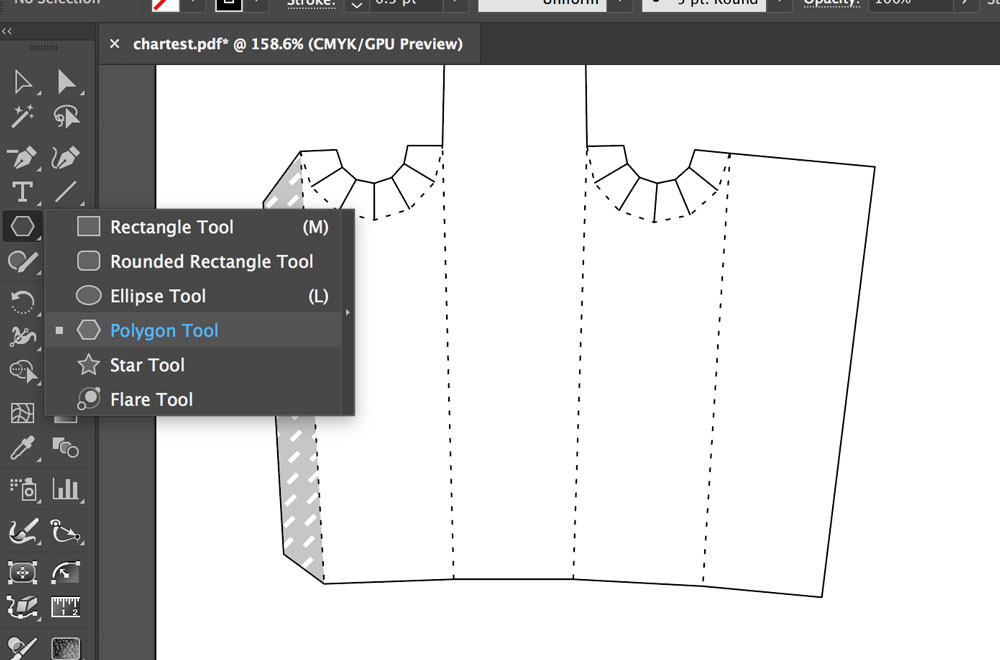
I set the tool to 12 sides…
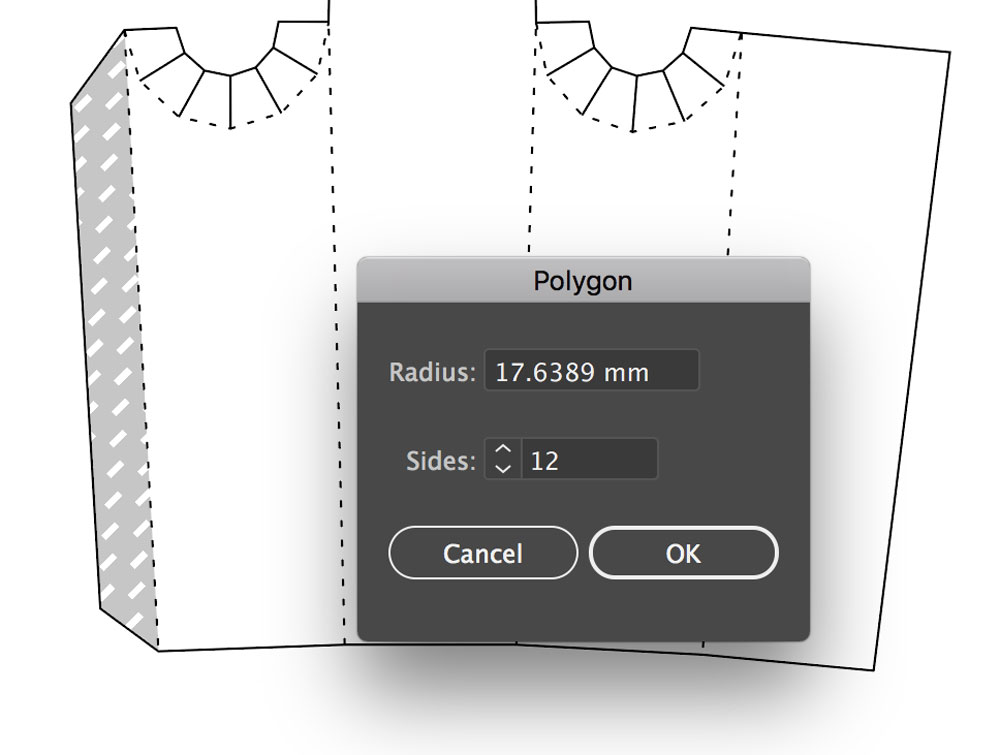
…and dragged out the shape to fit across the bottom of the leg.
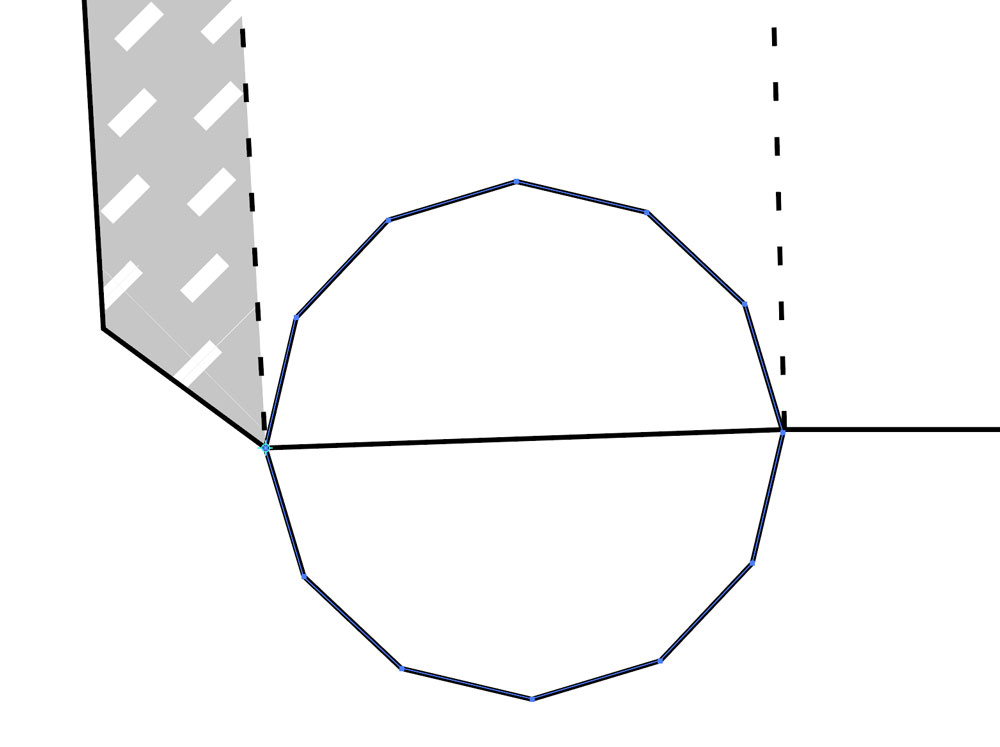
I copied the shape and shrunk it to make the inner shape.
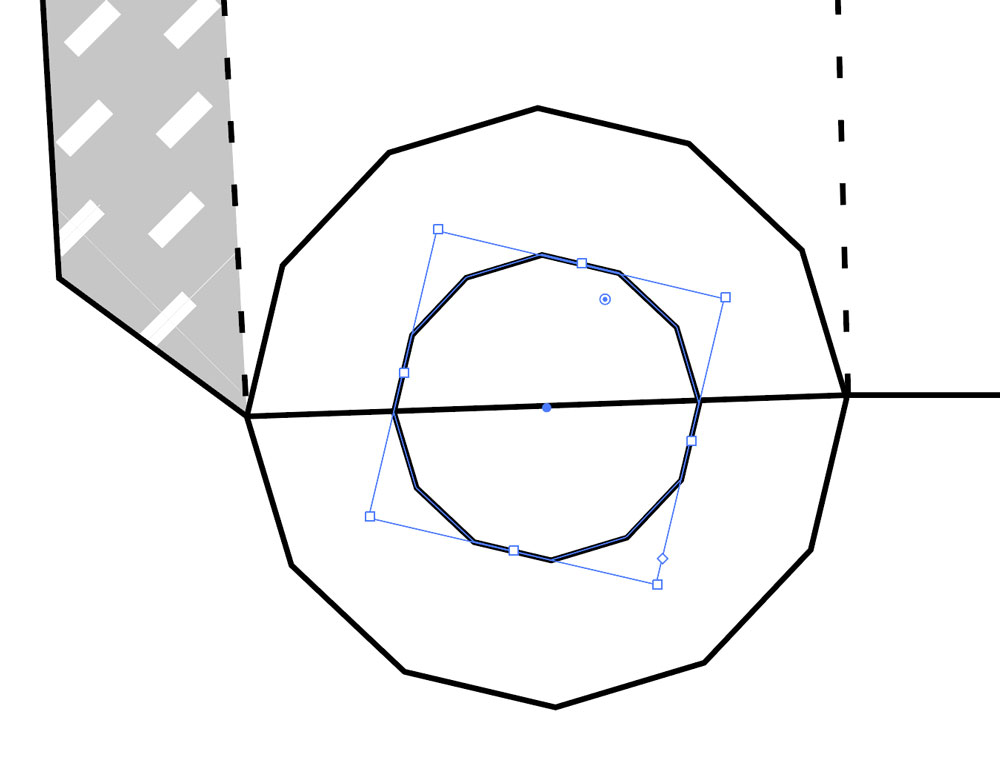
I then cut both of the dodecagons in half and stitched them into place.
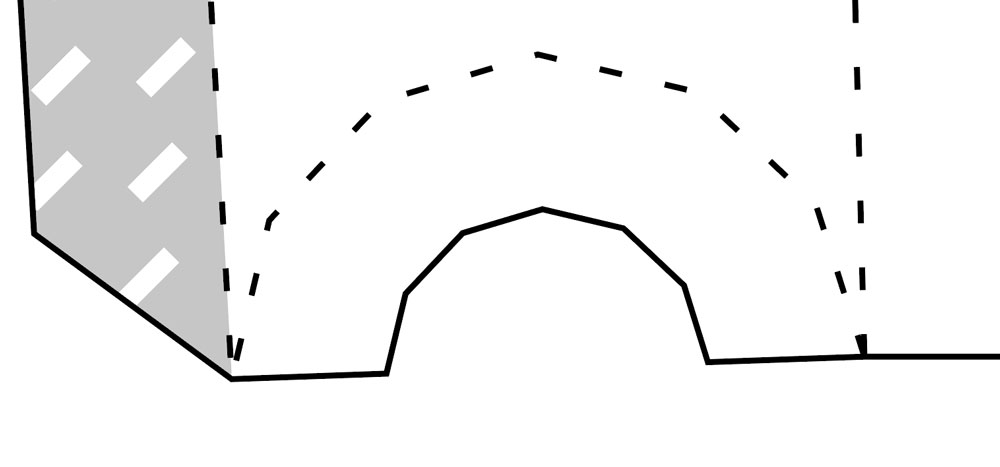
Then added the cut lines to make six tabs.
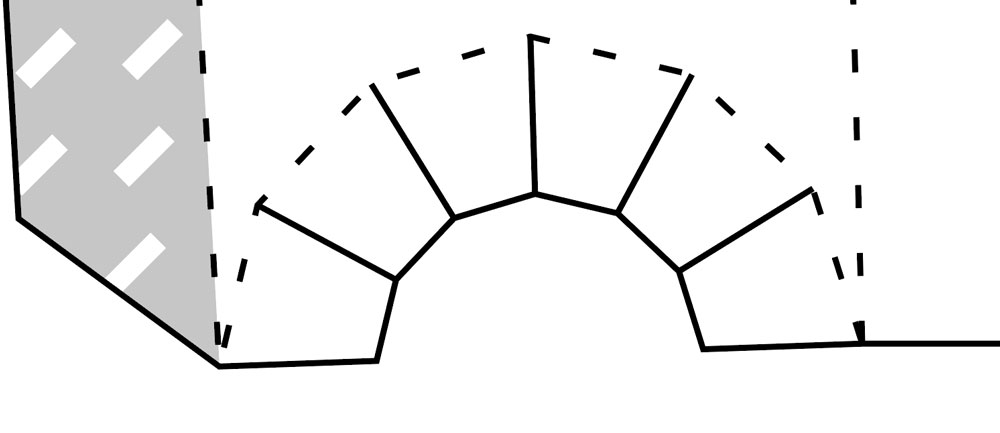
I designed a tube and slip ring with a matching foot. Here’s all the parts printed out ready for assembly.
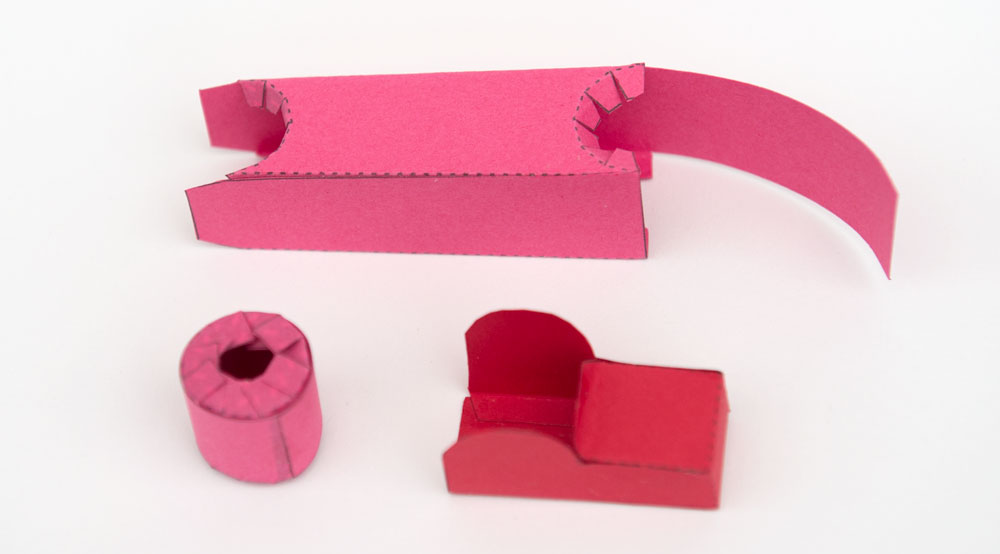
The tabs make a nicely curved surface for gluing even though all the lines are actually straight.
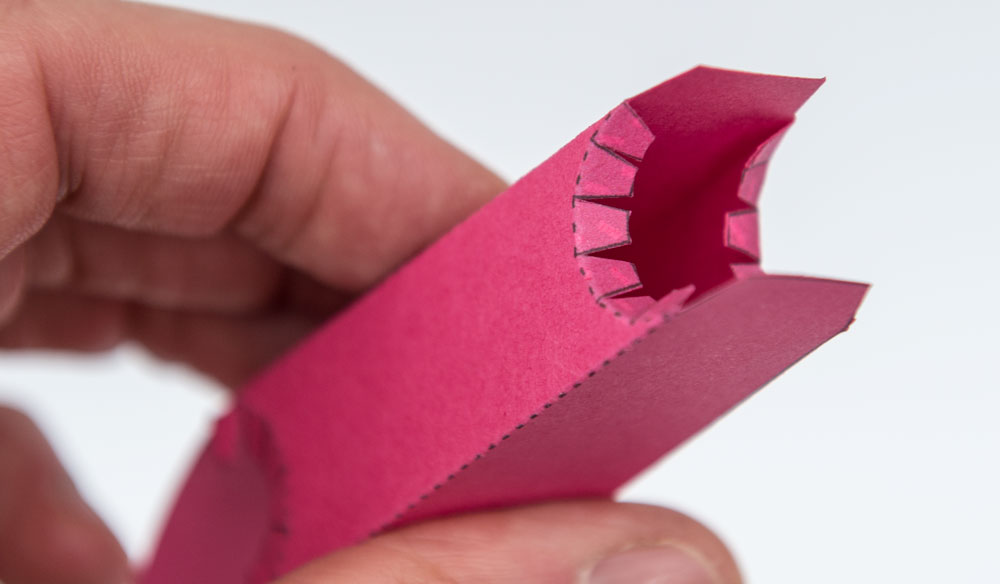
The slip ring glues to the leg leaving the inner core free to rotate.
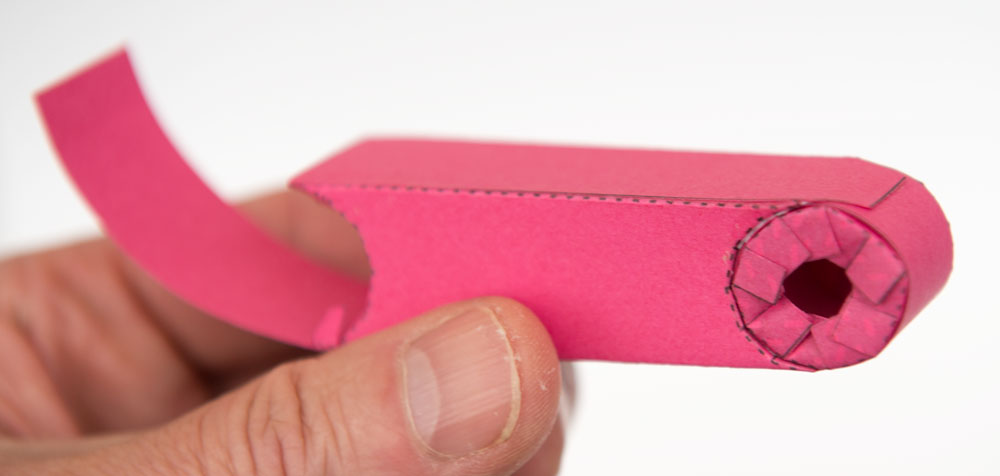
I then glued the foot to the inner core allowing it to flex back and forth.
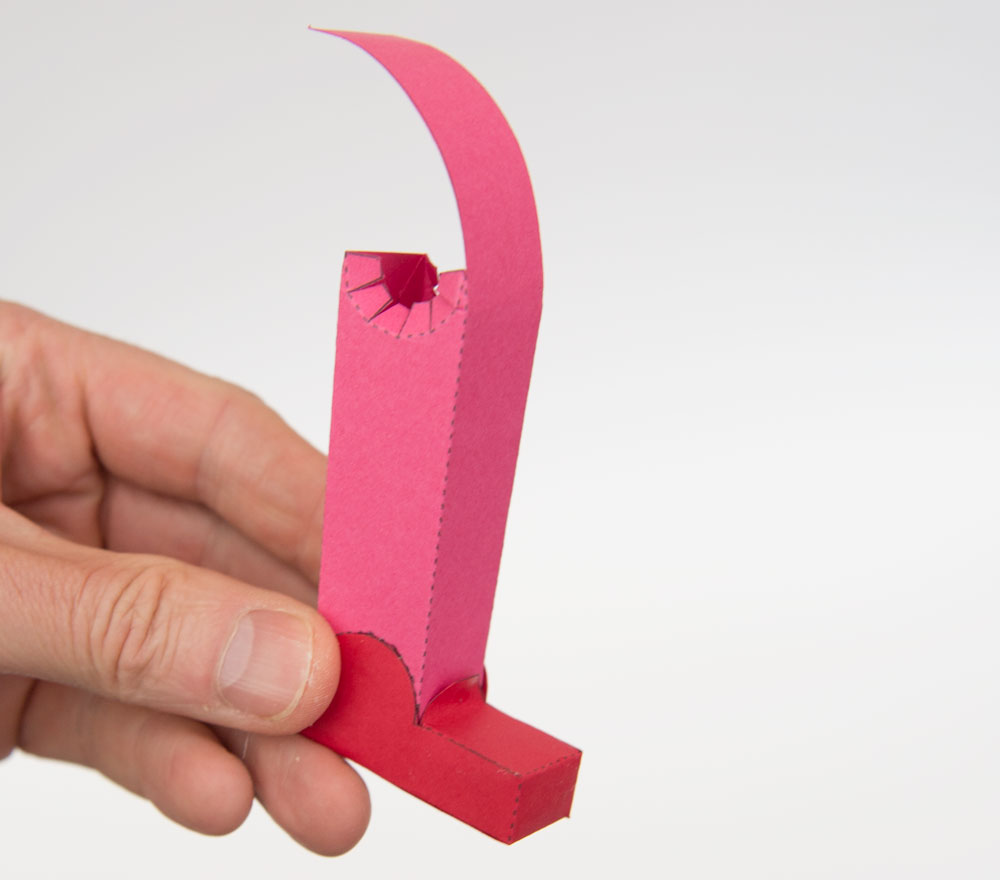
The feet can now be lined up with the floor.
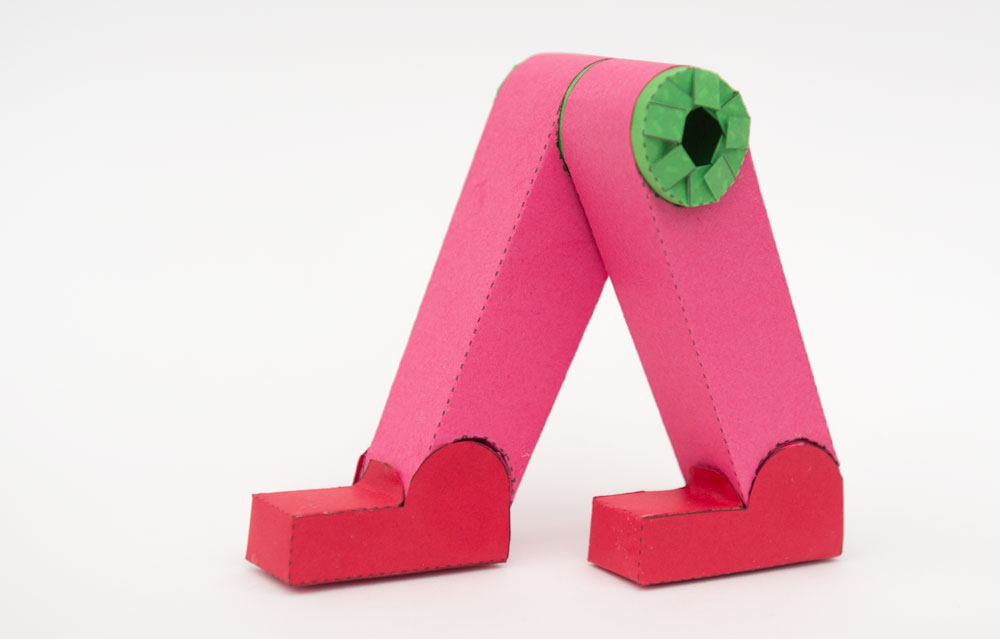
Here’s the legs fitted into the original body and working fine!
